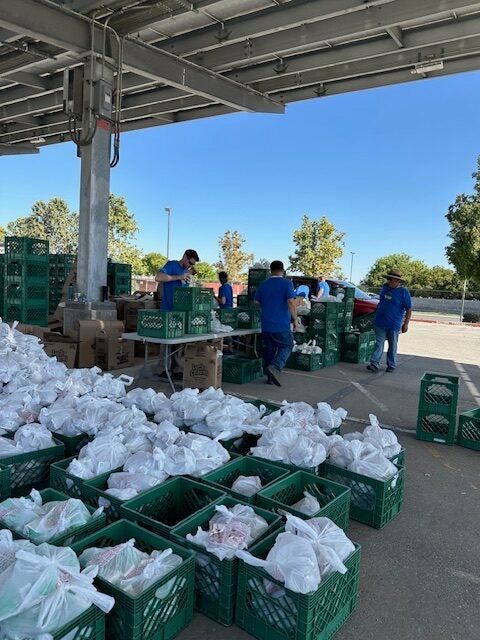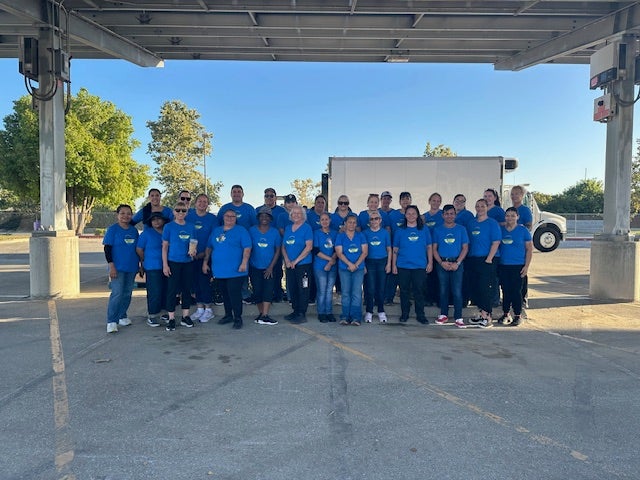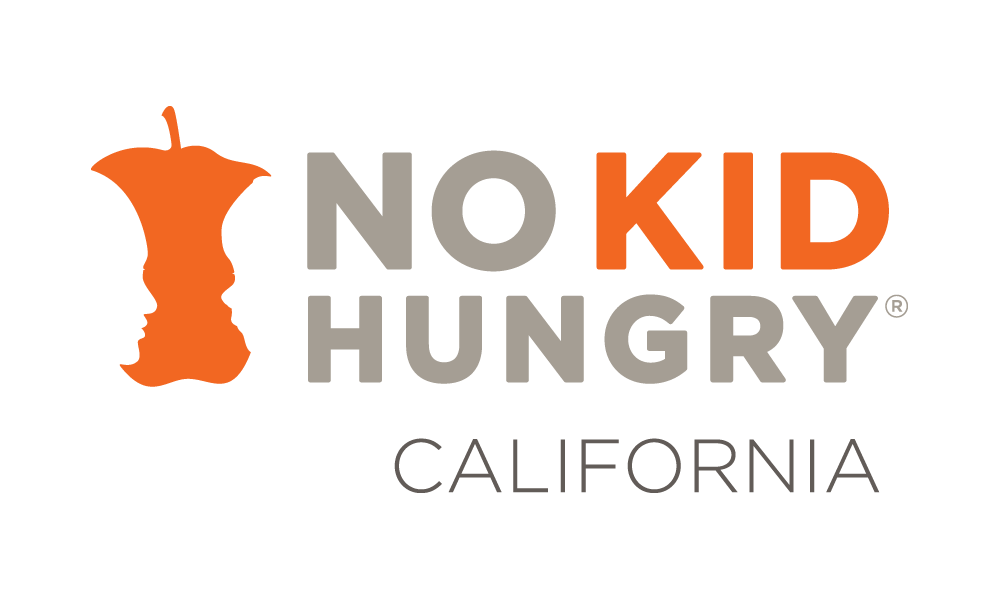“To watch a 5-year-old just be so happy that they got milk… I think just seeing that the kids enjoyed what we actually gave them, you know, it was a highlight.” – Jennifer Davis, director of nutrition services

Kern High School District (KHSD), serves a diverse student population of over 43,000 students across a vast geographic area, encompassing both urban and rural communities within Kern County.
Food insecurity is a significant challenge in Kern County, impacting a substantial portion of its population, particularly children with 1 in 5 kids experiencing hunger. Despite being an agricultural region, many residents face barriers to accessing nutritious and affordable food.
Jennifer Davis, director of nutrition services, and her team launched its inaugural non-congregate rural meal program this summer to combat childhood hunger.
“We started this program knowing that when there’s no school in session, kids should still have access to food,” said Davis. “We didn’t just serve our high school students, our rural feeding program is ages 2 to 18.”

District Summer Meal Service Overview:
- Key Achievement: Served over 520,000 breakfasts and lunches
- Number of Meals per Meal Kits: Seven days of breakfast and lunch (14 meals)
- Operational Model: A well-organized drive-through grab-and-go system, featuring five distinct stations for frozen items, vegetables, fruit, breakfast components and milk
- Integrity Plan: Parents/ guardians picked up meals where kids did not have to be present. Families did have to sign a waiver.
The program provided pre-packaged meal kits, each containing seven days’ worth of breakfast and lunch, which parents and guardians could pick up at designated sites in Kern County. Despite a slower start in the first week, where approximately 6,000 meal kits were distributed, the program grew and achieved a significant milestone.

“Our goal was to distribute 10,000 meal kits per week, equating to 140,000 meals,” Davis stated. “We served 520,000 meals! And this is just our first year sponsoring the non-congregate model.”
The service was strategically implemented every Wednesday throughout July, running for a three-hour window from 9 a.m. to 12 p.m. However, the high demand often led families to form lines as early as 5 a.m. Families received meal kits based on the number of children in their household, with a waiver system rigorously enforced to prevent any duplicate meal pickups across four sites. This structured approach aimed to maximize efficiency and ensure equitable access to meals.


“Kern County itself is geographically large,” said Davis. “And so, logistically, what’s considered rural areas for us to be able to feed kids when school is out, was kind of difficult. I am very proud of my staff and our partners and what we were able to accomplish.”
A notable challenge for the program was the limited number of eligible distribution points. Out of KHSD’s 30 school sites, only four qualified for the rural distribution program under the USDA’s rural map criteria. This restriction meant that the program, while impactful, could not reach all areas where need existed.
“I know what’s considered rural and what’s considered non-rural,” shared Davis. “Maybe they don’t just do the rural areas. We have some heavily populated suburban areas with food insecurity as well.”
Despite this, the program’s success underscored the critical demand for food assistance within the community and laid the groundwork for future enhancements, including the transition to offering 10-day meal kits instead of seven-day meal kits to further optimize service delivery and operational efficiency.
”Jennifer and her dedicated team at Kern High School District truly embody the spirit of community,” said Clinton Mungary, program manager for No Kid Hungry. “Serving over half a million meals in their first year of non-congregate feeding is a monumental achievement. Their unwavering commitment ensured that countless children, like the 5-year-old beaming over chocolate milk, received not just food, but a moment of pure joy and relief. This impact goes far beyond the plate, nourishing both body and spirit in the Kern County community.”

Ways You Can Help
New research by No Kid Hungry (see full report) reveals an overwhelming number of parents are struggling to put food on the table for their kids. This is especially true during the summer months when kids lose access to many essential free school meals.
You can ensure kids have the nutrition they need to thrive in and out of the classroom and reach their full potential in a variety of ways:
- Donate. $1 can help provide 10 meals* to kids. Your support will help us fund meal programs all over the country and help us advocate for policies that will help kids get the meals they need. *Donations help support programs that feed kids; No Kid Hungry does not provide individual meals. Meal equivalencies vary. Learn more at NoKidHungry.org/OneDollar.
- Advocate for kids. Reach out to your elected officials and ask them to do more to end childhood hunger. Tell your lawmaker to advocate for policies that will help kids get the meals they need.
- Become a sponsor or expand your summer non-congregate meal program for Summer 2026. Visit our Center for Best Practices for more information on the rules, eligibility, grant information and more.
Last update: November 18, 2025



